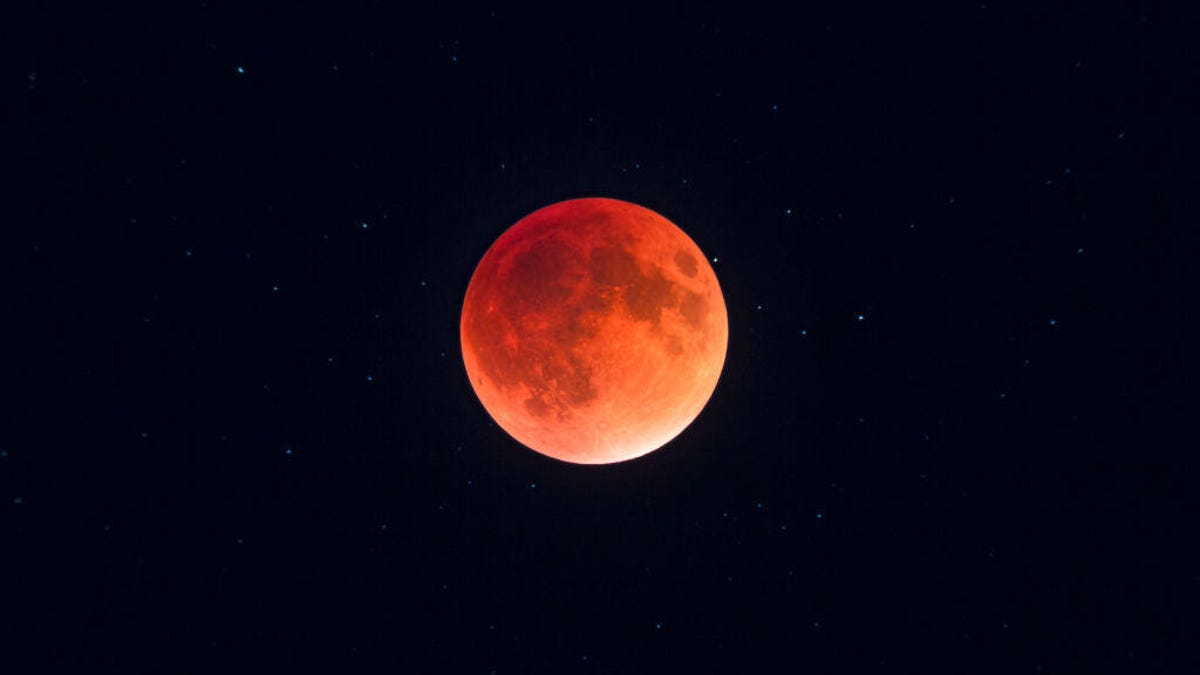A Super Harvest Blood Moon and a Partial Lunar Eclipse Coming Tuesday

Super Harvest Blood Moon almost sounds like a horror movie title. It’s not scary though, and can make for a great night out if you know what to look for. Let’s break down that Halloween-y name.
The Harvest Moon, which appears on September 17, occurs every year. It is simply the name given to the moon that falls closest to the autumnal equinox, which this year falls on September 22. But this year’s Harvest Moon will also be a supermoon, as well as a blood moon, and these phenomena do not often occur together.
To be a supermoon, the moon must be in its perigee, which means it is as close to Earth as it can get during its orbit. This makes the moon appear larger and brighter than normal. There are three to four supermoons per year, and they are usually in a row. This year, the first supermoon was last month’s rare blue supermoon. September is the second. We are also expecting supermoons in October and November.
So, what is a blood moon? Blood moons occur during partial or total lunar eclipses. The Earth blocks the sun from fully illuminating the moon, causing sunlight to curl around the Earth’s magnetic field. The field filters out sunlight, leaving mostly light from the red part of the spectrum, making the moon appear red. Like supermoons, blood moons occur a few times a year.
When is the super harvest blood moon?
The official full moon occurs on the evening of Tuesday, September 17 and the morning of Wednesday, September 18. Stargazers can expect to see a mostly full moon in the days leading up to the full moon and the days following it. If you look up at the sky on any given night between September 16 and 20, you’ll see a moon that is over 90% full. So if you miss it on September 17, you can still enjoy the bigger, brighter moon on other days, but it won’t be completely full.
The moon is the easiest celestial object to find in the sky. It will rise from the eastern sky for everyone in the U.S. around 7:50 p.m. ET on the East Coast and around 7:10 p.m. PT on the West Coast.
As you look up into the sky, keep an eye out for T Coronae Borealis, a white dwarf star that is about to go nova and will appear as a new star in the sky for a time.
When does the partial lunar eclipse occur?
Blood moons are caused by lunar eclipses. There will be one on the evening of September 17. The eclipse should be visible from all over the continental United States, although the time of day may vary depending on where you are.
On the East Coast, the eclipse will begin around 8:41 p.m., peak at 10:44 p.m., and end at 12:47 a.m. On the West Coast, it will begin around 7:12 p.m., right as the moon is climbing above the horizon. It will peak at 7:44 p.m., and end at 9:47 p.m. You can add or subtract an hour, depending on your time zone, to figure out when it will hit you.
It won’t be a huge eclipse. You’ll see a sliver of the moon disappear briefly before it comes back. The eclipse will have more of an effect on the color of the moon than on how well you can see it. If you’ve been itching to see a total lunar eclipse, you won’t have to wait long. The next one is scheduled for the evening of March 13, 2025.
How Rare is a Super Harvest Blood Moon?
None of the individual components of the super harvest blood moon are rare. Harvest moons occur every year, and supermoons occur three to four times a year. Blood moons also occur a few times a year. However, it is quite unusual for all three events to occur at the same time. The next time such an event is scheduled to occur is in September 2033, and it won’t happen again until 2042.




